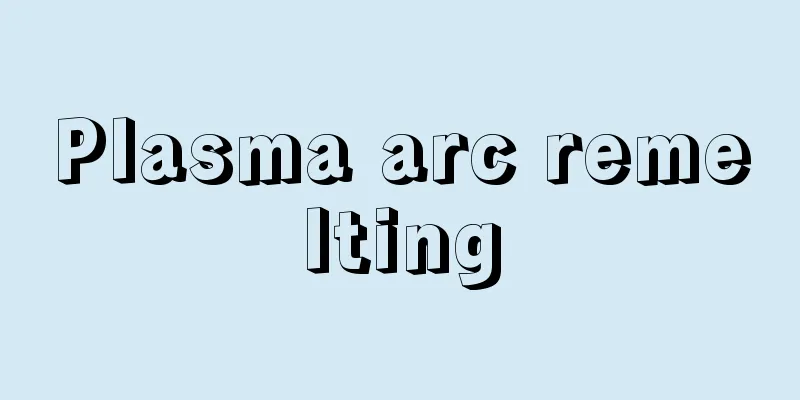Narrative literature

|
A general term for fictional original literature written in kana prose that flourished from the Heian to Kamakura periods. Its origins lie in the sacred ancient words (furugoto) that told the deeds of the gods who were the ancestors of each clan in ancient clan society. In the process of the formation of the ancient state, with the collapse of the clan's ritual foundations (saishi), it became a literary art of oral recitation circulated among the people, but the way of telling stories was firmly maintained as a convention, and in the storytelling space shared by the storyteller and the listener, it became a vessel for entrusting new emotions and thoughts of life that accompanied the transition and transformation of the times and society. In the Heian period, with the formation of urban life and the maturation of individual consciousness, the acceptance of the legendary novels written in China from the Six Dynasties to the Sui and Tang dynasties, and the development of prose due to the spread of kana characters, fictional narrative literature was born based on the ideas and plots of these oral stories. "The Tale of the Bamboo Cutter," said to be the origin of stories, is a masterpiece that injects new human life into a clear theme, but it is noteworthy that its world is framed by a combination of story types from various preceding traditions. It draws on the traditional mentality cultivated by the Japanese people and sheds light on the problems faced by real people. The development of narrative literature from "The Tale of the Bamboo Cutter" through "Utsubo Monogatari" and "Ochikubo Monogatari" to "The Tale of Genji" was a process of utilizing the framework of legend while overcoming it, but during that time, methods of lyrical human liberation and inner reflection on life were established in each of the so-called female diary literature, such as "Ise Monogatari", "Heichu Monogatari", and "Yamato Monogatari", which were based on oral tales related to the composition of waka poems, and "Kagero Nikki", which began with "Tosa Nikki" and was continued by female writers. "The Tale of Genji" stands out as a huge long story that incorporates the heritage of all the preceding literature and fully illuminates the reality of aristocratic society. Later, long stories such as "Hamamatsu Chunagon Monogatari," "Yoru no Nezame," and "Sagoromo Monogatari" followed suit. Also extant are collections of 10 short stories such as "Tsutsumi Chunagon Monogatari." While heavily influenced by "The Tale of Genji," each of these stories attempted to present a new style. Countless stories were created from the Heian to Kamakura periods, and the ones that remain today have likely been passed down to later generations because of their excellence. From works such as "Torikaebaya Monogatari" and "Sumiyoshi Monogatari" that were adapted from originals from the Heian period, to "Iwashimizu Monogatari", "Matsuuranomiya Monogatari", "Koke no Koromo", "Iwa de Shinobu", "Kaze tokinaki", "Asaji ga Tsuyu", "Waga mi ni ta toru himigimi" and others from the Kamakura period onwards, these are collectively called gikomonogatari. It was already the era of samurai rule, but gikomonogatari, which cut off from reality and were preoccupied with admiring and imitating the world of "The Tale of Genji" and "Sagomo Monogatari", could be said to have steadily declined. Eventually, they were replaced by the so-called Otogizoshi, which were welcomed by a new readership during the Muromachi period. [Ken Akiyama] "Studies on Narrative History" by Mitani Eiichi (1967, Yuseido Publishing)" ▽ "The World of Narrative Literature" by Mitani Eiichi (1975, Yuseido Publishing)" ▽ "The Origin of Ancient Literature" (included in the Complete Works of Kazamaki Keijiro 3, 1969, Ohfusha)" ▽ "Selected Works of Ikeda Kikan: Narrative Literature I and II" (1968, Shibundo) [References] | | |Otogi- | | Sagoromo| Tale of Sumiyoshi|The Tale of the | | | | |A ten-line book in old movable type, published during the Keicho period (1596-1615), owned by the National Diet Library . "The Tale of the Bamboo Cutter" Published during the Keicho era (1596-1615) Owned by the National Diet Library "The Tale of Sumiyoshi" Source: Shogakukan Encyclopedia Nipponica About Encyclopedia Nipponica Information | Legend |
|
平安時代から鎌倉時代にかけて盛行した、仮名散文による虚構の創作文学の総称。その起源は、古代の氏族社会における氏族氏族の始祖の神々の事跡を語る神聖な古言(ふるごと)であった。古代国家の形成過程において、氏族の祭祀(さいし)基盤の崩壊に伴い、民間に流伝する口誦(こうしょう)の文芸と化したが、その語り口は約束事として強固に保持され、語り手と聞き手とによって共有される語りの場において、時代・社会の推移変容に伴う新しい生活感情や思考を託す器となった。平安時代になって都市生活の形成とともに個人意識が成熟し、中国における六朝(りくちょう)から隋唐(ずいとう)にかけてつくられた伝奇小説の受容、仮名文字の普及による散文の発達などの諸条件のもとに、この口誦の物語の趣向・筋立てを材とする虚構の物語文学が発生することになった。 物語の祖といわれる『竹取物語』は明確な主題のもとに新しい人間の息吹が注ぎ込まれた名作であるが、その世界が先行のさまざまの伝承の話型の組合せによって枠どりされていることは注目すべきであろう。日本民族が培ってきた伝統的な心性をくみ上げつつ現実の人間が抱える問題を照らし出したのである。『竹取物語』から『うつほ物語』『落窪物語(おちくぼものがたり)』を経て『源氏物語』へと展開する物語文学の推移は、伝奇的枠組みを利用しつつ、これを超克する過程であったが、その間には、『古今集』の成立以後貴族社会でもてはやされた歌語り、すなわち和歌の詠作にまつわる口誦説話を母胎とする『伊勢物語(いせものがたり)』『平中物語(へいちゅうものがたり)』『大和物語(やまとものがたり)』などの歌物語、あるいはまた『土佐日記』に始まり、女性作家によって引き継がれた『蜻蛉日記(かげろうにっき)』ほかの、いわゆる女流日記文学によって、それぞれに叙情的な人間解放、内面的な人生観照の方法が確立していた。『源氏物語』は、それら先行の諸文学の遺産を総収しつつ、貴族社会の現実を全的に照らし出す巨大な長編物語として傑出している。 以後『浜松中納言物語(はままつちゅうなごんものがたり)』『夜(よる)の寝覚(ねざめ)』『狭衣物語(さごろもものがたり)』などの長編が追随した。また『堤中納言物語(つつみちゅうなごんものがたり)』のごとき10編の短編物語集も現存している。およそ『源氏物語』の影響を濃密に被りながら、それぞれに新趣向を打ち出そうとするものであった。平安時代から鎌倉時代にかけてつくられた物語作品は無数であり、現存するものは秀逸であるがゆえに後世に伝えられたのであろう。『とりかへばや物語』『住吉物語(すみよしものがたり)』など、平安時代の原作に基づいて改作された作品をはじめ、鎌倉時代以降『石清水物語(いわしみずものがたり)』『松浦宮物語(まつらのみやものがたり)』『苔(こけ)の衣(ころも)』『いはでしのぶ』『風につれなき』『浅茅(あさじ)が露』『わが身にたどる姫君』等々があり、これらは擬古物語と総称されている。すでに武士政権の時代であるが、そうした現実を遮断し、総じて『源氏物語』や『狭衣物語』などの世界を憧憬(しょうけい)し模倣することに汲々(きゅうきゅう)たる擬古物語は、一途(いちず)に衰退の道を歩んだといえよう。やがて室町時代の新しい読者層に迎えられた、いわゆる御伽草子(おとぎぞうし)にとってかわられることになる。 [秋山 虔] 『三谷栄一著『物語史の研究』(1967・有精堂出版)』▽『三谷栄一著『物語文学の世界』(1975・有精堂出版)』▽『『古代文学の発生』(『風巻景次郎全集3』所収・1969・桜楓社)』▽『『池田亀鑑選集 物語文学Ⅰ・Ⅱ』(1968・至文堂)』 [参照項目] | | | | | | | | | | | | | | |古活字十行本 慶長年間(1596~1615)刊国立国会図書館所蔵"> 『竹取物語』 上 慶長年間(1596~1615)刊国立国会図書館所蔵"> 『住吉物語』 出典 小学館 日本大百科全書(ニッポニカ)日本大百科全書(ニッポニカ)について 情報 | 凡例 |
>>: Storytelling Monk - Storytelling
Recommend
Oobil - Obiru
…A perennial plant of the lily family (illustrati...
Ryu Koizuka
Year of death: December 3, 1920 Year of birth: 14 ...
timepiece
…It is called a timer or clock, and although it d...
Masquerade ball - masquerade
A ball where people wear masks or unusual costume...
Juan de Austria
1545‐78 Spanish military commander. Born to King C...
Abbe, Ernst
Born: January 23, 1840 in Eisenach Died January 14...
Obshchestvo soedinyonnykh slavyan (English notation) Obshchestvosoedinyonnykhslavyan
...Under the leadership of Colonel Pesteli, the f...
Scabiosa atropurpurea (English spelling) Scabiosaatropurpurea
…[Mr. Makoto Fukuoka]. … *Some of the terminology...
Thank you beetle - Thank you beetle
...The main pests in this family are: pine leaf m...
Royalism
…Politics was to calm the chaotic warring states ...
Hemerocallis citrina (English spelling) Hemerocalliscitrina
… [Mitsuru Hotta]... *Some of the terminology tha...
Thoreau, Henry David
Born July 12, 1817 in Concord, Massachusetts. Died...
MFPM - Multi-Functional Power Meter
…A holding company for Manufacture Française des ...
Sodium Amide
NaNH2 (39.01). It is obtained by reacting metalli...
Alectoris
…Among the partridges, the European partridge ( P...









